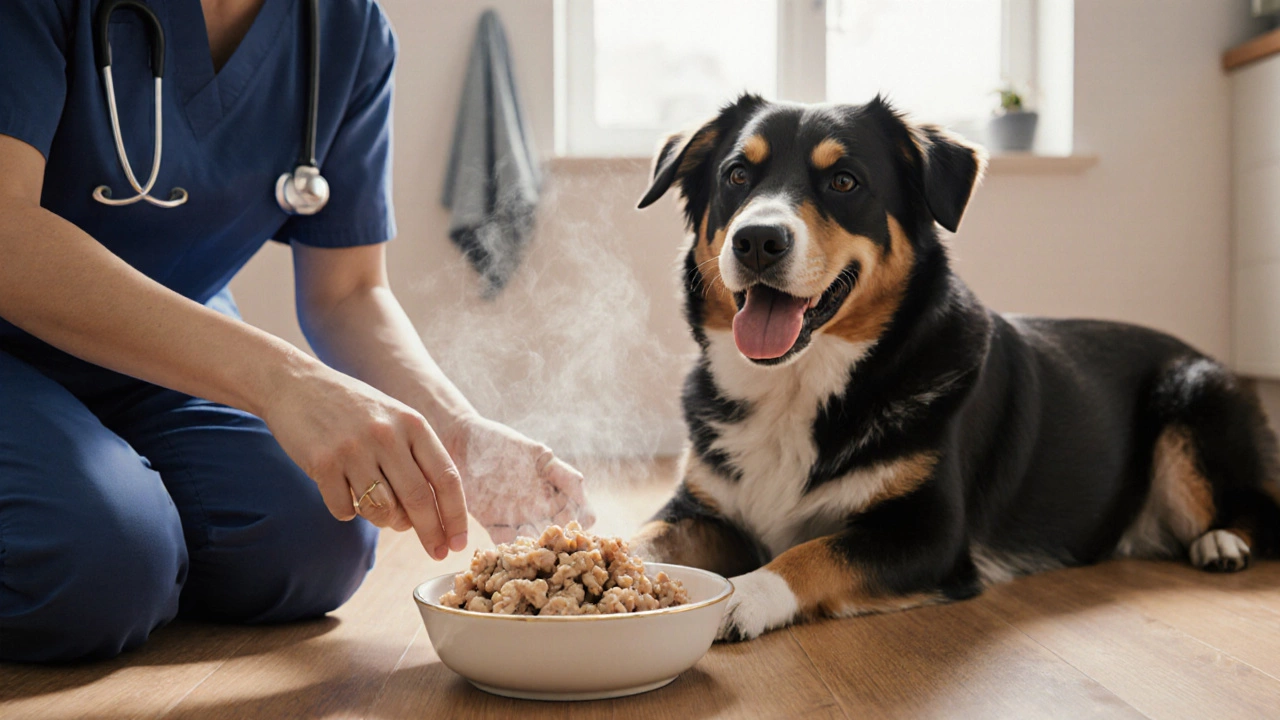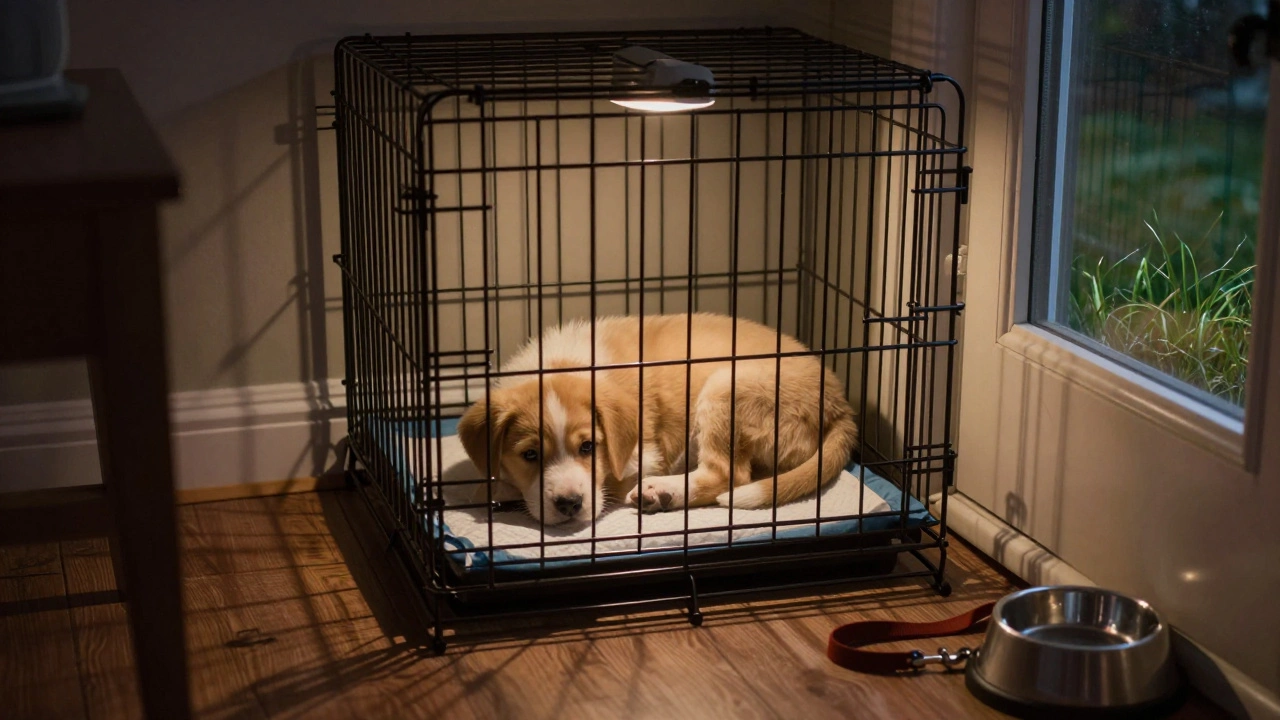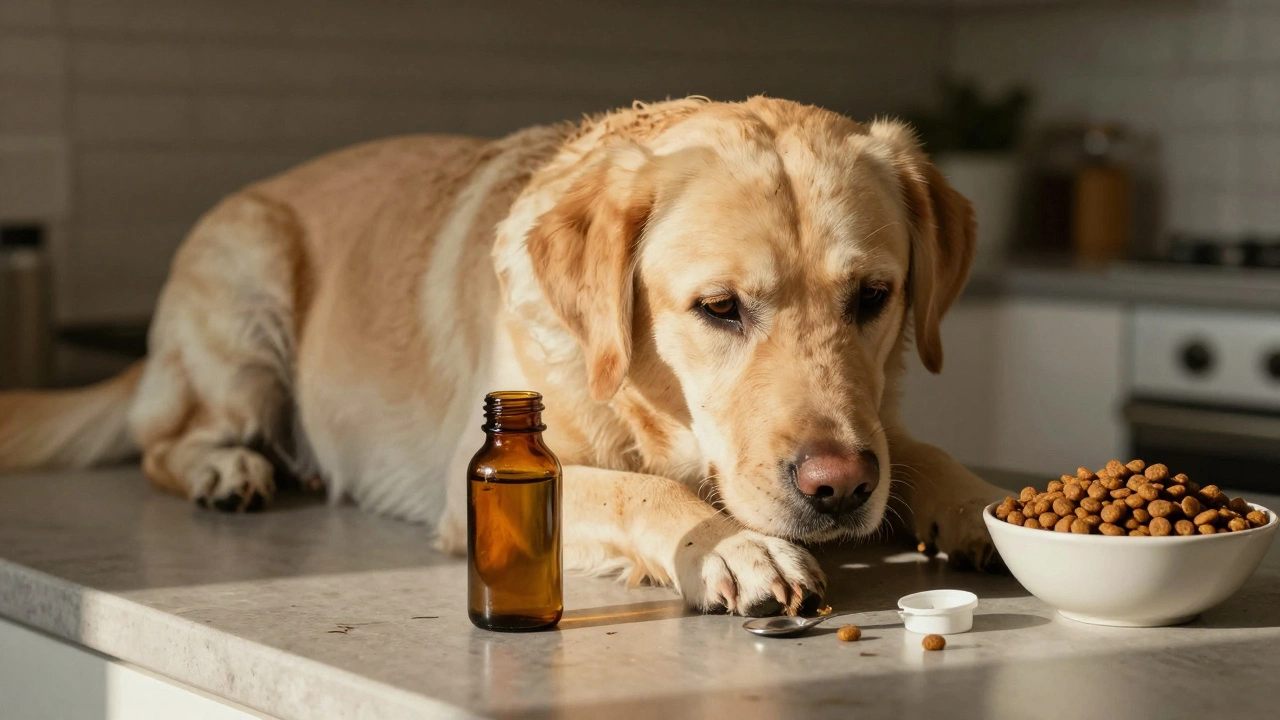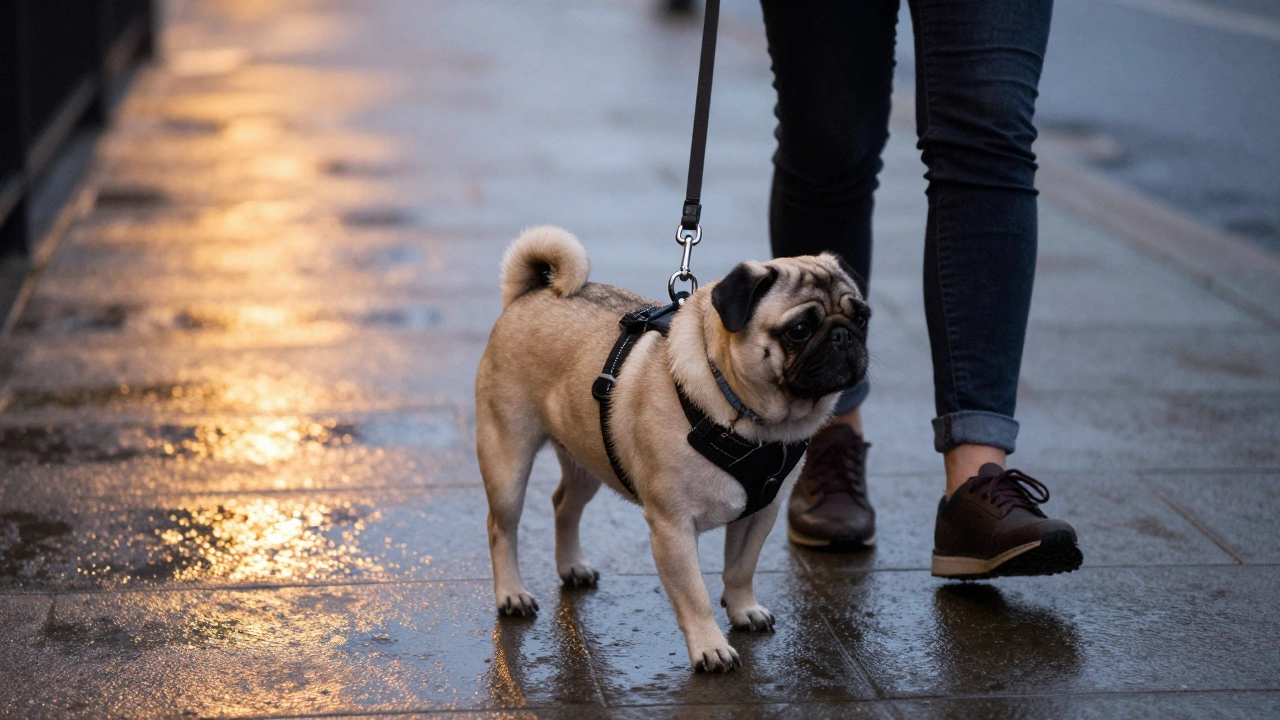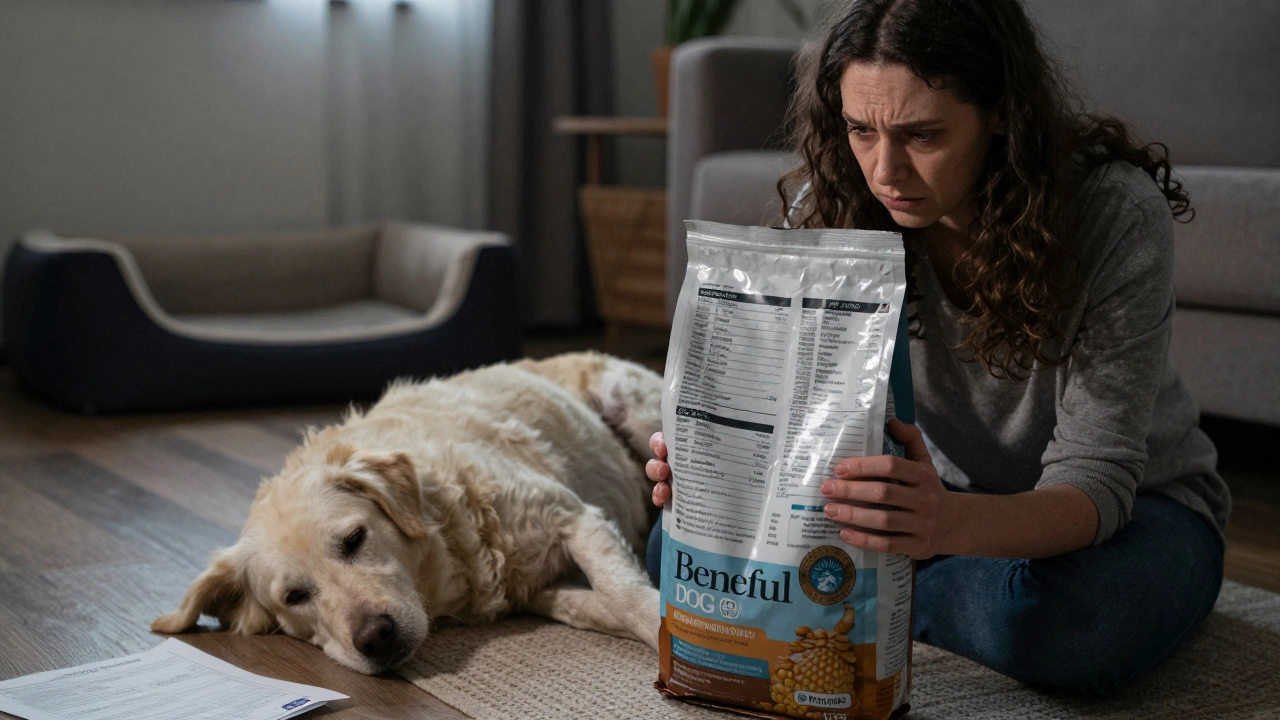Ground Chicken Portion Calculator
This tool calculates the safe daily portion of ground chicken for your dog based on veterinary recommendations. Ground chicken should make up 25-30% of your dog's daily calories.
- Do not feed more than 30% of daily calories as ground chicken
- Always cook chicken plain - no seasonings, salt, or fat
- Use this calculator as a starting point - monitor your dog's digestion
Recommended Daily Portion:
Important Notes
- Never feed raw chicken without proper freezing and handling
- Remove all fat and skin before cooking
- Do not add seasoning, garlic, or onions
- Monitor your dog's stool consistency
Many dog owners wonder if ground chicken is a safe and healthy option for their pets. The short answer? Yes - but only if you do it right. Ground chicken can be a great source of protein for dogs, but it’s not a free pass to dump raw or seasoned chicken into their bowl. Too many people assume that because chicken is human food, it’s automatically safe for dogs. That’s where things go wrong.
Why Ground Chicken Can Be a Good Choice
Ground chicken is lean, easy to digest, and packed with high-quality protein. It contains essential amino acids that help maintain muscle mass, support immune function, and keep your dog’s coat shiny. Unlike some commercial dog foods loaded with fillers like corn or soy, plain ground chicken gives your dog real, whole-food nutrition.
It’s especially useful for dogs with sensitive stomachs or food allergies. Many commercial dog foods use beef, lamb, or chicken by-products that can trigger reactions. Switching to plain ground chicken - without additives - often clears up skin issues, itching, or digestive upset. A 2023 study from the University of Edinburgh found that 68% of dogs with chronic gastrointestinal problems showed improvement within four weeks after switching to a simple protein like ground chicken.
It’s also budget-friendly. A 1-pound pack of ground chicken costs about half as much as premium kibble per ounce. If you’re making homemade meals, it’s one of the most cost-effective protein sources you can use.
Raw vs Cooked: What’s Safer?
This is the biggest debate. Some dog owners swear by raw diets. Others avoid it entirely. Here’s the reality: both can work - but raw comes with risks.
Raw ground chicken can carry harmful bacteria like Salmonella and Campylobacter. These don’t usually make healthy adult dogs sick, but they can cause vomiting, diarrhea, and fever. More importantly, they can spread to humans - especially kids, elderly people, or anyone with a weak immune system. The UK’s Food Standards Agency warns that handling raw poultry is one of the top causes of food poisoning in households with pets.
Cooked ground chicken is far safer. Boiling or baking it without oil, salt, garlic, or onions kills off dangerous bacteria. No seasoning. No spices. Just plain chicken. Dogs don’t need flavor. They’ll eat it just fine.
If you’re set on feeding raw, freeze the chicken for at least 72 hours first. Freezing reduces some bacterial load, but it doesn’t eliminate it. And always wash your hands, bowls, and surfaces after handling. Most vets in Bristol and beyond recommend cooking it - even if you’re doing a full raw diet for other meats.
How Much Should You Feed?
Ground chicken shouldn’t be the only thing your dog eats. Dogs need a balance of protein, fat, carbs, vitamins, and minerals. Feeding only ground chicken long-term leads to nutritional gaps - especially in calcium, zinc, and omega-3s.
As a general rule: ground chicken should make up no more than 25-30% of your dog’s daily calories. For a 30-pound dog, that’s about 3-4 ounces per day. If you’re mixing it with rice and veggies, aim for a ratio of 50% chicken, 30% carbs (like sweet potato or brown rice), and 20% vegetables (carrots, green beans, zucchini).
Too much chicken - even cooked - can lead to loose stools or pancreatitis, especially in breeds like Miniature Schnauzers or Cocker Spaniels that are prone to fat sensitivity. Always monitor your dog’s poop. If it’s soft or greasy for more than a day or two, cut back.

What to Avoid
Not all chicken is created equal. Here’s what never to feed your dog:
- Seasoned chicken - Garlic, onion, salt, pepper, and herbs like thyme or rosemary can be toxic. Even small amounts of onion powder can damage red blood cells.
- Chicken skin and fat - High fat triggers pancreatitis. Trim it off before cooking.
- Bones - Cooked chicken bones splinter and can puncture the stomach or intestines. Never give them.
- Processed ground chicken - Store-bought ground chicken meant for humans often contains preservatives, fillers, or sodium phosphate. Read the label. If you can’t pronounce it, don’t feed it.
When Ground Chicken Isn’t Right
Ground chicken isn’t a cure-all. It’s not ideal for:
- Puppies under 12 weeks - Their digestive systems aren’t ready for whole protein meals. Stick to puppy-formulated food.
- Dogs with kidney disease - High protein can strain their kidneys. Talk to your vet before changing their diet.
- Obese dogs - While lean, ground chicken still adds calories. Pair it with low-carb veggies and watch portions closely.
- Dogs allergic to chicken - Some dogs develop allergies over time. Signs include ear infections, paw licking, and hot spots. If symptoms appear after feeding chicken, stop and get a food trial done.
How to Prep Ground Chicken for Your Dog
Here’s a simple, safe method:
- Buy 90% lean ground chicken from a trusted butcher or grocery store. Avoid pre-seasoned or frozen blends.
- Place it in a pot with enough water to cover. Bring to a boil, then simmer for 15-20 minutes until no pink remains.
- Drain the water. Do not save the broth - it’s too fatty and salty.
- Let it cool. Mix in a tablespoon of cooked sweet potato or pumpkin for fiber.
- Store in the fridge for up to 4 days, or freeze in portion-sized containers.
You can also bake it in the oven at 350°F for 25 minutes. No oil needed. Just spread it on a lined baking sheet and bake until fully cooked.
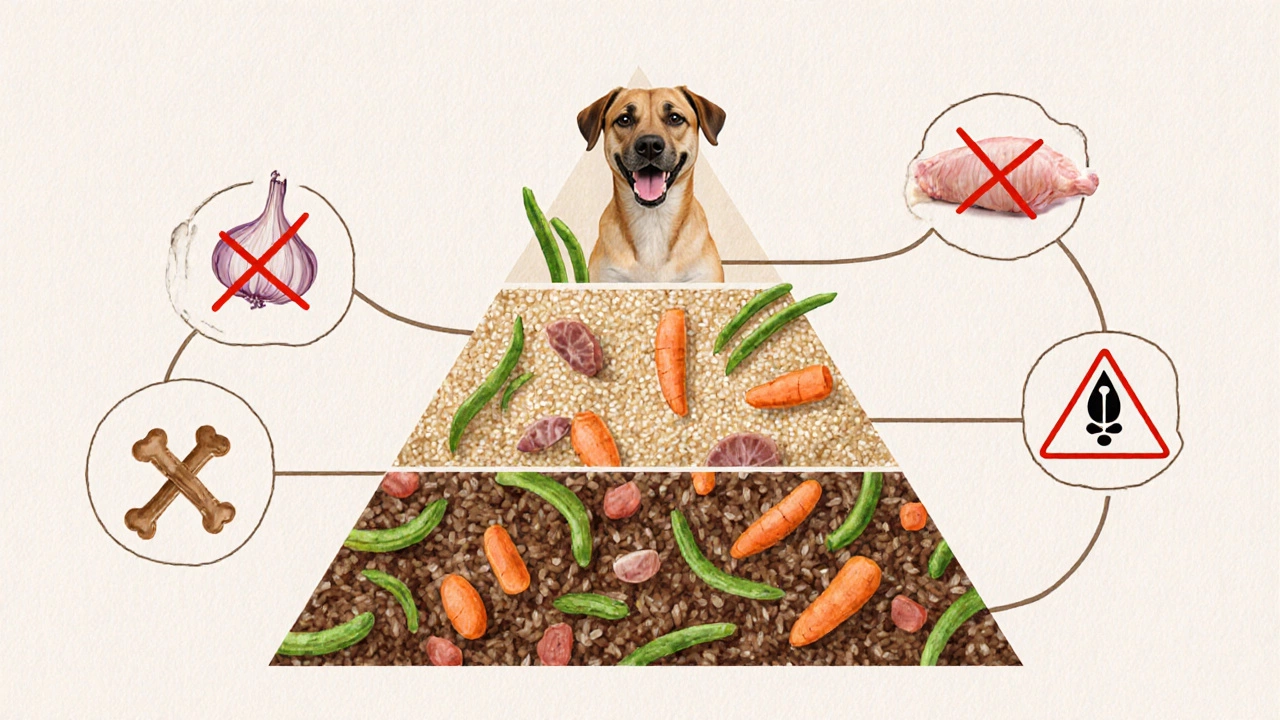
Alternatives to Ground Chicken
If your dog doesn’t tolerate chicken, or you want variety, try:
- Ground turkey - Leaner than chicken, great for sensitive dogs.
- Lean ground beef (5% fat) - Higher in iron, good for active dogs.
- White fish (cod, haddock) - Low allergen, rich in omega-3s.
- Organ meats (liver, heart) - Feed 1-2 times a week. Packed with nutrients but high in vitamin A - don’t overdo it.
Rotating proteins helps prevent allergies and gives your dog a broader nutrient profile. Don’t stick to just one meat for months on end.
Real-Life Example: A Dog’s Recovery Story
A client in Bristol had a 7-year-old rescue terrier named Max who had chronic diarrhea and constant ear infections. His previous owner fed him a mix of kibble and table scraps - including chicken with seasoning. After switching to plain boiled ground chicken with pumpkin and brown rice, Max’s stools normalized in 10 days. His ear infections cleared up within six weeks. He gained a little weight, his coat became glossy, and he stopped scratching nonstop. No medication. Just clean food.
That’s not magic. It’s basic nutrition.
Final Thoughts
Ground chicken is a smart, affordable, and nutritious option for dogs - if you keep it simple. Cook it plain. Serve it in the right amounts. Pair it with other safe foods. Avoid seasoning, bones, and fat. And always watch for signs your dog isn’t tolerating it.
It’s not a miracle food. But when used correctly, it’s one of the best things you can give your dog for less than £2 a meal.
Can dogs eat raw ground chicken?
Yes, but it’s risky. Raw ground chicken can carry harmful bacteria like Salmonella and Campylobacter. While healthy adult dogs may not get sick, they can spread these germs to people - especially children and older adults. Most veterinarians recommend cooking it thoroughly to eliminate the risk. If you choose raw, freeze it for 72 hours first and handle it with extreme care.
How often can I feed my dog ground chicken?
Ground chicken should make up no more than 25-30% of your dog’s daily diet. For a medium-sized dog, that’s about 3-4 ounces per day. Feed it as part of a balanced meal with carbs like sweet potato and veggies. Don’t use it as the sole food source - it lacks essential nutrients like calcium and certain vitamins. Rotate proteins weekly to avoid nutritional gaps.
Is ground chicken better than kibble?
It’s not better - it’s different. High-quality kibble is formulated to meet all of your dog’s nutritional needs. Ground chicken is a whole-food protein source, but it’s incomplete on its own. Many owners use ground chicken as a topper or to transition away from low-quality kibble. If you’re switching to a homemade diet, you’ll need to add supplements or use a balanced recipe from a veterinary nutritionist.
Can puppies eat ground chicken?
Puppies under 12 weeks old should stick to puppy-formulated food. Their digestive systems aren’t ready for whole protein meals. After 12 weeks, you can introduce small amounts of plain, cooked ground chicken as part of a balanced diet. Always mix it with easily digestible carbs like rice or pumpkin. Never feed raw chicken to puppies - their immune systems are still developing.
What should I do if my dog gets sick after eating ground chicken?
Stop feeding it immediately. Watch for vomiting, diarrhea, lethargy, or loss of appetite. If symptoms last more than 24 hours, contact your vet. If you suspect raw chicken was the cause, mention it - they may test for bacterial infection. Keep your dog hydrated and offer a bland diet (like boiled rice and plain chicken) once they’re stable. Never give over-the-counter medications without veterinary advice.

